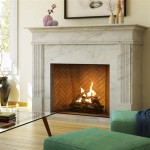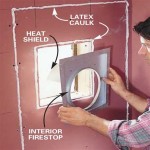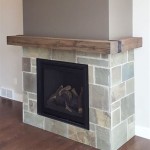Your articles must be original content and should not be copied. ## Understanding Gas Log Fireplace Parts: A Comprehensive Guide
Gas log fireplaces offer a convenient and aesthetically pleasing alternative to traditional wood-burning fireplaces. Their ease of use, reduced maintenance, and cleaner burning profile make them a popular choice for homeowners. However, understanding the various components that make up a gas log fireplace is crucial for proper operation, maintenance, and troubleshooting. This article provides a detailed overview of the essential parts found in a typical gas log fireplace.
Burner System Components
The burner system is the heart of the gas log fireplace, responsible for distributing the gas and creating the flames. It consists of several interconnected parts that work together to achieve efficient and safe combustion.
Burner: The burner is the primary component responsible for creating the flames. It is typically constructed from cast iron, stainless steel, or ceramic. The burner's design, including the number and configuration of its ports (small holes), significantly affects the flame appearance and heat output. Different burner designs are available, including radiant burners, which focus on radiating heat, and blue-flame burners, which produce a cleaner, hotter flame. The correct burner is essential for the specific type of gas log set being used (natural gas or propane).
Orifice: The orifice is a small, precisely sized opening that controls the flow of gas to the burner. It is a critical component as it regulates the amount of fuel being delivered for combustion. Orifices are often made of brass or stainless steel and are sized according to the BTU (British Thermal Unit) rating of the gas log set and the type of gas being used. Using the wrong orifice size can result in improper combustion, producing too much or too little heat and potentially creating dangerous levels of carbon monoxide. When converting a gas log set from natural gas to propane or vice versa, the orifice *must* be replaced with one specifically designed for the alternative fuel.
Gas Valve: The gas valve controls the flow of gas to the burner system. It is a safety device that can shut off the gas supply in case of a malfunction or leak. Common types of gas valves include manual gas valves, which are operated by hand, and automatic gas valves, which are controlled by a thermostat or remote control. Automatic gas valves often incorporate safety features such as a thermocouple or thermopile (described below) that can shut off the gas supply if the pilot light is extinguished.
Pilot Assembly: The pilot assembly provides a small, constant flame that ignites the main burner. It typically consists of a pilot burner, a thermocouple or thermopile, and a gas line connecting it to the gas valve. The pilot flame must be properly adjusted and maintained to ensure reliable ignition of the main burner. The assembly is designed to withstand high temperatures and continuous operation.
Thermocouple/Thermopile: The thermocouple or thermopile is a safety device that ensures the pilot light is lit before allowing gas to flow to the main burner. A thermocouple generates a small electrical current when heated by the pilot flame. This current keeps the gas valve open. If the pilot light is extinguished, the thermocouple cools down, the current stops, and the gas valve closes, preventing gas from escaping. A thermopile is similar to a thermocouple but generates a larger electrical current, often used to power the gas valve directly or operate a remote control system. The choice between a thermocouple and a thermopile is determined by the design of the gas valve and the required power.
Gas Line: The gas line is a pipe that carries the gas from the main gas supply to the gas valve and then to the burner and pilot assembly. It is typically made of black iron or flexible gas connector. The gas line must be properly sized and installed to ensure adequate gas flow and prevent leaks. All gas line connections should be tested for leaks using a soap solution after installation or any maintenance work.
Decorative and Safety Enhancements
Beyond the core burner system, other components contribute to the aesthetic appeal and safe operation of the gas log fireplace.
Gas Logs: Gas logs are ceramic or refractory cement logs designed to mimic the appearance of real wood logs. They are strategically placed on the burner to create a realistic flame pattern and radiate heat. The logs are designed with specific placement instructions to ensure proper airflow and combustion. Incorrect log placement can lead to inefficient burning, soot formation, and even damage to the burner system. Different types of gas logs are available, including vented and vent-free logs; vented logs require an open fireplace damper, while vent-free logs are designed to burn cleanly without ventilation. Using the correct type of log for the fireplace setup is crucial for safe and efficient operation. Vented logs cannot be used in a vent-free setup and vice-versa.
Ember Material/Rock Wool: Ember material or rock wool is used to enhance the realism of the fireplace and create a glowing ember effect. It is typically placed around the base of the logs or on top of the burner. Ember material is designed to withstand high temperatures and is available in various colors and textures to simulate burning embers or glowing coals. This material is intended to be used sparingly, as excessive amounts can restrict airflow and affect combustion. Some sets use vermiculite instead, which serves a similar purpose.
Safety Screen/Glass Door: A safety screen or glass door is often installed in front of the gas log fireplace to prevent sparks or embers from escaping and to protect children and pets from burns. Safety screens are typically made of metal mesh, while glass doors provide a more enclosed barrier. Glass doors can also improve the efficiency of the fireplace by reducing heat loss when the fireplace is not in use. Safety screens or glass doors should always be in place when the fireplace is operating.
Oxygen Depletion Sensor (ODS) (Vent-Free Only): This is a crucial safety device in vent-free gas log fireplaces. The ODS monitors the oxygen level in the room. If the oxygen level drops below a certain threshold, indicating inadequate ventilation and potentially dangerous carbon monoxide buildup, the ODS will automatically shut off the gas supply, preventing further combustion. The ODS is a critical safety feature and should never be tampered with or disabled. Regular cleaning of the ODS pilot assembly is recommended to ensure proper functioning.
Remote Control (Optional): Some gas log fireplaces are equipped with a remote control that allows for convenient operation from a distance. The remote control can be used to turn the fireplace on and off, adjust the flame height, and control other features. Remote controls typically require batteries and may need to be paired with the gas valve control module. Some systems even include programmable thermostats for automated temperature control.
Essential Control System Parts
The control system manages the operation of the gas log fireplace, from ignition to flame adjustment. These components ensure safe and regulated combustion.
Igniter: The igniter is responsible for creating the spark that ignites the pilot light. Common types of igniters include piezo igniters, which generate a spark when a button is pressed, and electronic igniters, which use a battery-powered circuit to generate a spark. A malfunctioning igniter can prevent the pilot light from igniting, rendering the fireplace unusable. Regular cleaning and maintenance of the igniter can help prevent malfunctions. Some systems use a standing pilot instead, which eliminates the need for an igniter, but consumes more gas.
Pilot Adjustment Screw: The pilot adjustment screw is a small screw located on the gas valve that controls the gas flow to the pilot light. It allows for fine-tuning the pilot flame to ensure reliable ignition of the main burner. An improperly adjusted pilot flame can cause ignition problems or safety issues. The pilot flame should be adjusted according to the manufacturer's instructions. The proper flame should envelop the thermocouple or thermopile sensor tip.
Pressure Regulator: The pressure regulator is a device that maintains a constant gas pressure to the burner, regardless of fluctuations in the main gas supply. It ensures consistent flame height and heat output. A malfunctioning pressure regulator can cause erratic flame behavior or even damage to the burner system. The pressure regulator is factory-set and should only be adjusted by a qualified technician if necessary.
Millivolt System (If Applicable): Many gas log fireplace systems, especially those with remote controls, utilize a millivolt system. This system generates a small electrical current (millivolts) from the thermopile heated by the pilot light. This electrical current is then used to power the gas valve and, in some cases, the remote control receiver. The millivolt system allows for operation even during a power outage, as it does not rely on external electricity. A weak or failing thermopile is a common cause of problems with millivolt systems. Checking thermopile output with a multimeter can help diagnose issues.
Understanding the components of a gas log fireplace is vital for maintaining its safe and efficient operation. Regular inspection and maintenance, along with prompt replacement of worn or damaged parts, will ensure years of reliable performance. If repairs are needed, consult a qualified technician to ensure proper installation and safety.

Gas Fireplace Natural Bdm35 The Cozy Cabin Lennox Hearth Parts

A Plus Inc Superior B800 Replacement Parts And Accessories

Crb2618pr Gas Log Parts For Comfort Glow Ventfree Logs By Desa

Napoleon Parts

Gas Fireplace Vermontcastings Parts For Vermont Castings Majestic

Gbu36 Natural Vent Gas Fireplace 232 234 Vermontcastings Parts For Vermont Castings Majestic

Identifying Gas Fireplace Parts Www Mygasfireplacerepair Com

A Plus Inc Lennox Superior Marco Majestic Peterson

Cgcftn Fireplace Parts For Desa Comfortglow Partsfor Com

What Are Common Gas Fireplace Service Parts Fireplaces Direct Learning Center
Related Posts








